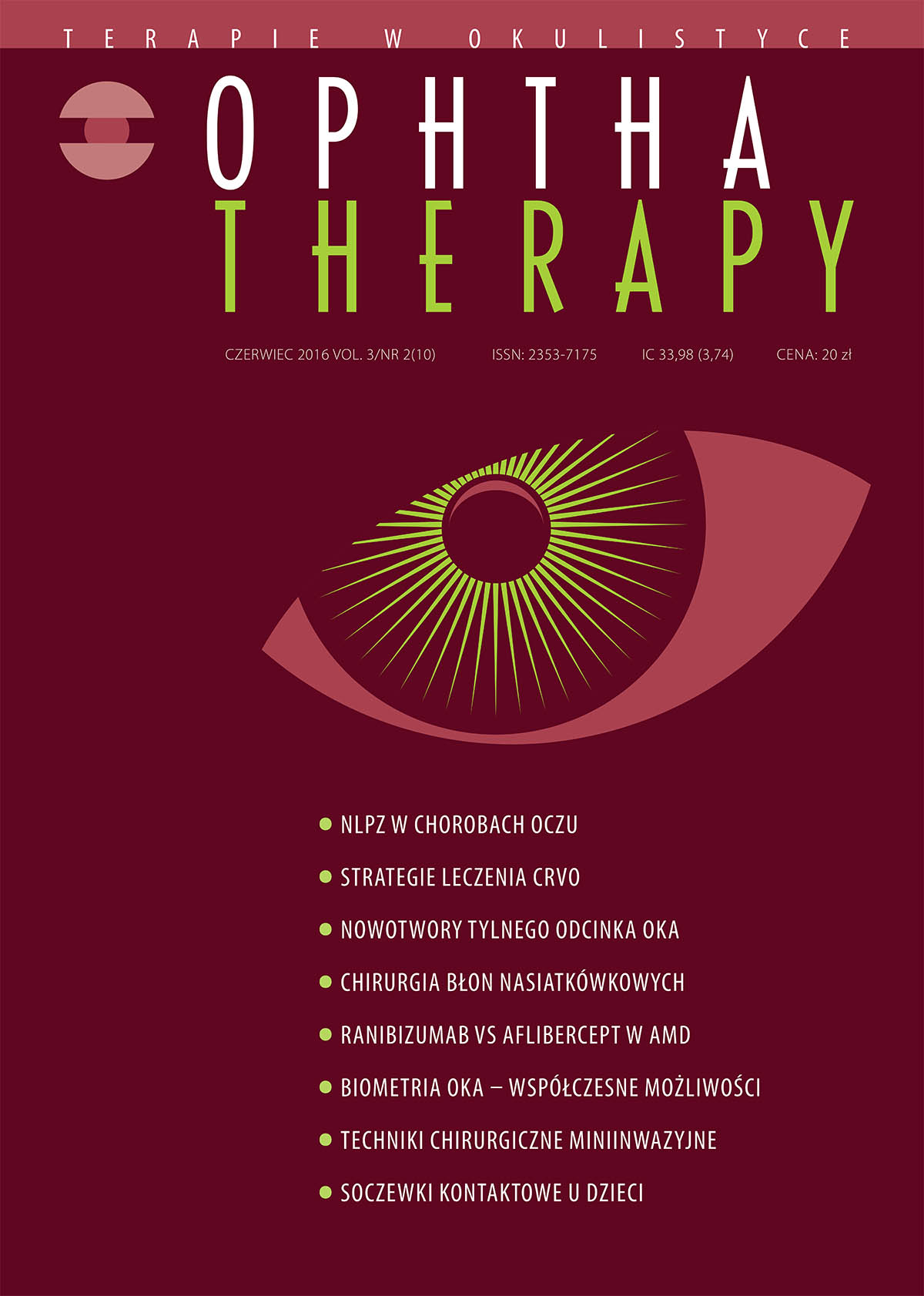Ranibizumab in the treatment of exudative age-related macular degeneration in patients, who were previously treated with aflibercept and did not achieve satisfactory results
Main Article Content
Abstract
Age-related macular degeneration is a leading cause of irreversible vision loss worldwide. Anti-vascular endothelial growth factor agents injected intravitreally are approved as a gold standard treatment method. There are many evidences from clinical trials about efficacy and safety of such therapy. It not only prevents vision loss but in some cases helps to improve visual outcomes. Nevertheless, in many cases it’s challenging task because there is a group of patients who are resistant to a therapy. They may require switching from one drug to another e.g. conversion from aflibercept to ranibizumab.
Downloads
Article Details

This work is licensed under a Creative Commons Attribution-NonCommercial-NoDerivatives 4.0 International License.
Copyright: © Medical Education sp. z o.o. License allowing third parties to copy and redistribute the material in any medium or format and to remix, transform, and build upon the material, provided the original work is properly cited and states its license.
Address reprint requests to: Medical Education, Marcin Kuźma (marcin.kuzma@mededu.pl)
References
2. Kovach JL, Schwartz SG, Flynn HW Jr. et al. Anti-VEGF Treatment Strategies for Wet AMD. J Ophthalmol. 2012; 2012: 786870.
3. Kański JJ, Bowling B. Okulistyka kliniczna. Wyd. 4. EDRA Urban & Partner, Wrocław 2013.
4. Johnston SS, Wilson K, Huang A et al. Retrospective analysis of first-line anti-vascular endothelial growth factor treatment patterns in wet age-related macular degeneration. Adv Ther. 2013; 30(12): 1111-27.
5. Szabo SM, Hedegaard M, Chan K et al. Ranibizumab vs. aflibercept for wet age-related macular degeneration: network meta-analysis to understand the value of reduced frequency dosing. Curr Med Res Opin. 2015; 31(11): 2031-42.
6. Figurska M. Postępy w leczeniu zwyrodnienia plamki związanego z wiekiem. Okul Dypl. 2013; 3(5): 16-23.
7. Charakterystyka produktu leczniczego – Lucentis.
8. Brown DM, Kaiser PK, Michels M et al.; ANCHOR Study Group. Ranibizumab versus verteporfin for neovascular age-related macular degeneration. N Engl J Med. 2006; 355(14): 1432-44.
9. Rosenfeld PJ, Brown DM, Heier JS et al.; MARINA Study Group. Ranibizumab for neovascular age-related macular degeneration. N Engl J Med. 2006; 355(14): 1419-31.
10. Razi F, Haq A, Tonne P et al. Three-year follow-up of ranibizumab treatment of wet age-related macular degeneration: influence of baseline visual acuity and injection frequency on visual outcomes. Clin Ophthalmol. 2016; 10: 313-9.
11. Ying G, Huang J, Maguire M et al.; Comparison of Age-related Macular Degeneration Treatments Trials Research Group. Baseline predictors for one-year visual outcomes with ranibizumab or bevacizumab for neovascular age-related macular degeneration. Ophthalmology. 2013; 120(1): 122-9.
12. Gibson JM, Gibson SJ. A safety evaluation of ranibizumab in the treatment of age-related macular degeneration. Expert Opin Drug Saf. 2014; 13(9): 1259-70.
13. Yamazaki T, Koizumi H, Yamagishi T et al. Subfoveal choroidal thickness after ranibizumab therapy for neovascular age-related macular degeneration: 12-month results. Ophthalmology. 2012; 119(8): 1621-7.

